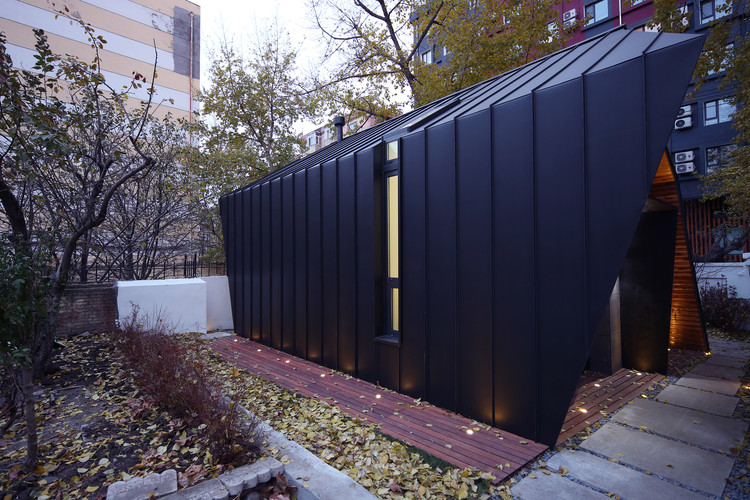
Zinc is a natural element extracted from ores. Its symbol, which appears in the dreaded Periodic Table, is Zn. Through a metallurgical process of burning its impurities (reducing zinc oxide and refining), it assumes a much more friendly appearance, and later becomes the sheets, coils, and rollers used in construction. The main characteristic of this material is its malleability, which allows it to be worked easily, allowing to cover complex forms in facades and roofs of buildings.

Zinc is naturally resistant to corrosion. Between six months and two years after its installation, depending on the climate, the exposure of the building, and the aggressiveness of the atmosphere, it develops a natural layer called patina (light gray), which gives it great longevity (up to 120 years depending on the factors above). What is interesting is that, beyond its long life cycle, zinc does not require any special maintenance. In effect, it continues to develop a protective layer throughout its life, which can correct some of its imperfections or risks. Another interesting quality is that 100% of rolled or worked zinc products are recyclable at the end of their life cycle and their assembly process consumes little energy compared to other metals used in construction.
The 20 projects below highlight the versatility of zinc.
A Monolith In Zinc / Tengbom

Midden Studio / Studio Weave

Stonehenge Visitor Centre / Denton Corker Marshall

Terunobu Fujimori's Soft-Hard Zinc House Opens Near Tokyo

Fairhaven Beach House / John Wardle Architects

Port Melbourne House / Pandolfini Architects

Regent Park Aquatic Centre / MacLennan Jaunkalns Miller Architects

Adjustable Forms / DLR Group

Perry and Marty Granoff Center for the Creative Arts, Brown University / Diller Scofidio + Renfro

Desjardins Group Head Office / ABCP architecture + Anne Carrier Architectes

Publilettre / Fabre-DeMarien Architectes

Benbow Yard / FORMstudio

Sandringham Primary School / Walters & Cohen

Montrose Cultural Centre / Teeple Architects

Pitched Roof House / Chenchow Little

AIANC Center for Architecture and Design / Frank Harmon Architect

Chinguacousy Park Redevelopment / MacLennan Jaunkalns Miller Architects

Principal Riverwalk Pavilion / Substance Architecture

Stephen Hawking Centre at the Perimeter Institute for Theoretical Physics / Teeple Architects

Home in High Latitude / hyperSity architects



